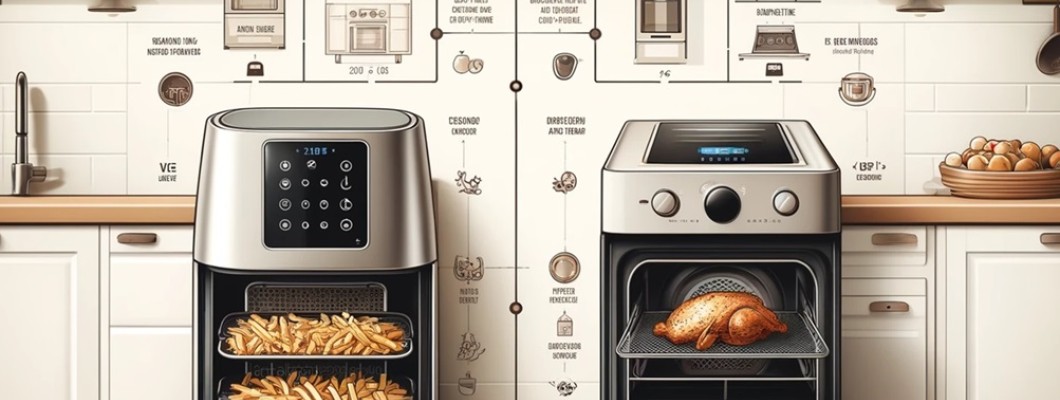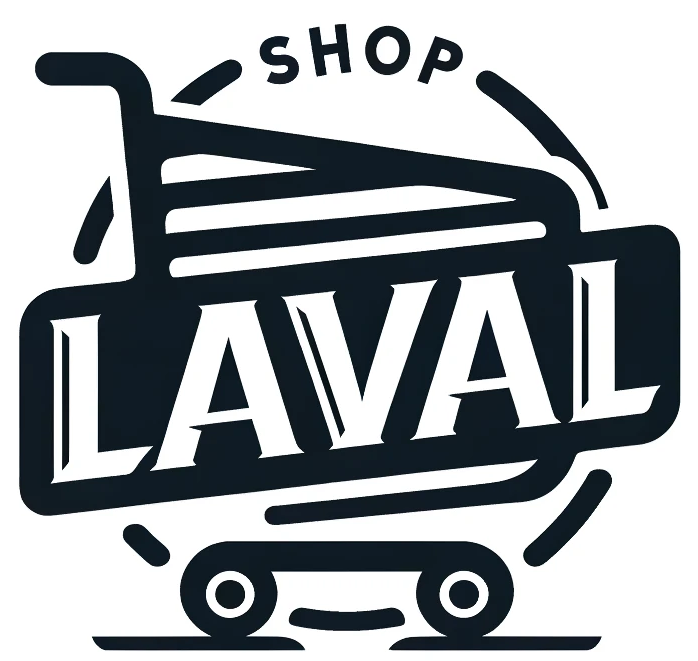
When it comes to cooking appliances, the air fryer and the traditional oven are two popular choices. Both have their unique advantages and disadvantages, and understanding these can help you decide which one is best for your kitchen. In this blog post, we’ll explore the pros and cons of air fryers and traditional ovens to help you make an informed decision.
Introduction to Air Fryers and Traditional Ovens
Air Fryer: An air fryer is a compact kitchen appliance that uses hot air circulation to cook food. It’s known for producing crispy and evenly cooked dishes with little to no oil. Air fryers have gained popularity due to their convenience and health benefits.
Traditional Oven: A traditional oven, whether gas or electric, is a staple in most kitchens. It uses either natural gas or electric heating elements to cook food. Ovens are versatile and can handle a wide range of cooking tasks, from baking and roasting to broiling and more.
Now, let’s dive into the specifics and compare these two appliances.
Cooking Performance
Air Fryer:
- Pros:
- Quick Cooking: Air fryers cook food faster than traditional ovens due to their compact size and powerful heating elements.
- Crispy Texture: Perfect for achieving a crispy texture on foods like fries, chicken wings, and vegetables without the need for excessive oil.
- Healthier Cooking: Uses little to no oil, making it a healthier option for frying foods.
- Cons:
- Limited Capacity: The small size of an air fryer means you can only cook a limited amount of food at a time.
- Learning Curve: Some users may find it takes time to get used to cooking with an air fryer and achieving the desired results.
Traditional Oven:
- Pros:
- Versatile: Can handle a wide variety of cooking tasks, from baking cakes to roasting meats and vegetables.
- Large Capacity: Ideal for cooking large meals or multiple dishes at once, making it perfect for families and gatherings.
- Even Cooking: Provides consistent and even cooking results, especially in convection ovens which use a fan to circulate hot air.
- Cons:
- Longer Cooking Times: Typically takes longer to preheat and cook food compared to an air fryer.
- Higher Energy Consumption: Uses more energy, which can result in higher utility bills.
Convenience and Usability
Air Fryer:
- Pros:
- Compact Size: Takes up less counter space and is easy to store when not in use.
- Ease of Use: Simple controls and presets make it user-friendly, even for beginners.
- Easy to Clean: Most parts are dishwasher safe, making cleanup a breeze.
- Cons:
- Limited Functionality: Primarily used for frying, though some models offer additional features like baking and grilling.
- Requires Monitoring: Smaller capacity means you might need to cook in batches and keep an eye on the cooking process.
Traditional Oven:
- Pros:
- Multi-Functionality: Can be used for baking, roasting, broiling, and more, providing a wide range of cooking options.
- Set and Forget: Once your food is in the oven, you can typically leave it unattended until it’s done.
- Built-In Models: Many kitchens have built-in ovens, which save counter space and integrate seamlessly into kitchen design.
- Cons:
- Bulky: Takes up more space and isn’t portable like an air fryer.
- Longer Cleanup: Cleaning a traditional oven can be more time-consuming, especially if food spills or splatters.
Cost and Energy Efficiency
Air Fryer:
- Pros:
- Affordable: Generally less expensive than traditional ovens, making it a budget-friendly option.
- Energy Efficient: Uses less energy due to its smaller size and shorter cooking times.
- Cons:
- Initial Investment: While affordable, it’s still an additional cost if you already have a traditional oven.
Traditional Oven:
- Pros:
- Long-Term Investment: A good quality oven can last many years and handle a variety of cooking tasks.
- Cost per Use: More cost-effective for cooking large meals or multiple dishes at once.
- Cons:
- Higher Purchase Price: Generally more expensive than air fryers.
- Energy Consumption: Uses more energy, especially if used frequently for long cooking times.
Health and Nutrition
Air Fryer:
- Pros:
- Healthier Frying: Uses minimal oil, reducing fat and calorie intake.
- Nutrient Retention: Quick cooking times help preserve nutrients in vegetables and other foods.
- Cons:
- May Not Suit All Recipes: Some recipes may not turn out as well in an air fryer as they would in a traditional oven.
Traditional Oven:
- Pros:
- Versatile Cooking: Suitable for a wide range of healthy recipes, from baked goods to roasted vegetables.
- No Added Fats: Baking and roasting can be done without added fats, making it a healthy cooking method.
- Cons:
- Nutrient Loss: Longer cooking times can lead to nutrient loss in some foods.
Final Thoughts: Which is Right for You?
Choosing between an air fryer and a traditional oven depends on your cooking needs, kitchen space, and personal preferences. Here are some scenarios to help you decide:
Choose an Air Fryer if:
- You want a quick and easy way to prepare crispy, fried foods with less oil.
- You have limited kitchen space and need a compact, portable appliance.
- You’re looking for a budget-friendly, energy-efficient cooking option.
Choose a Traditional Oven if:
- You need a versatile appliance that can handle a wide range of cooking tasks.
- You often cook large meals or multiple dishes at once.
- You prefer an appliance that can be integrated into your kitchen design and used for long-term cooking needs.
Both air fryers and traditional ovens have their unique advantages. Understanding these can help you make the best choice for your culinary adventures. Happy cooking!

Leave a Comment